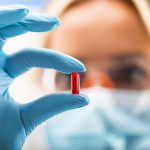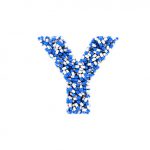The “Nonproprietary Naming of Biological Products” draft guidance was published by the Food and Drug Administration (FDA) in August 2015 and finalized in January 2017, and an update was released in March 2019. The purpose of the guidance was to establish a naming convention for the nonproprietary name of biological products licensed under the Public Health Service Act (PHS Act). The objectives of this naming convention included ensuring safe use and pharmacovigilance for biological products.
FDA’s nonproprietary naming convention details the addition of a unique suffix to the core name of originator biological products, as well as related biological products, and biosimilar products. This unique four-letter suffix should be attached to the core name by a hyphen.
The March 2019 update provides clarification that already licensed biological products under Section 351 of the Public Health Service Act (PHS Act) do not need to include a four-letter suffix. Likewise, the suffix naming convention does not apply to transition biological products. FDA also noted that, for interchangeable products, a proper name consisting of a combination of the core name and a unique suffix will be designated.
Based on the FDA guidance, a suffix should be:
- unique,
- devoid of meaning,
- four lowercase letters, three of which are distinct,
- nonproprietary,
- attached with a hyphen to the core name,
- and free of legal barriers.
FDA’s rationale for the suffixes includes both safe use and pharmacovigilance for biological products. The unique four-letter suffix helps to identify biological products for prescribing and dispensing, as well as to help distinguish between originator biological products, related biological products, and biosimilars, thereby increasing safe use among the products. Furthermore, biological products which utilize nonproprietary names with suffixes help in the monitoring and tracking of adverse events and improved pharmacovigilance.
Suffix evaluation is performed by both the Division of Medication Error Prevention and Analysis (DMEPA) in the Center for Drug Evaluation and Research (CDER), as well as the Advertising and Promotional Labeling Branch (APLB) in the Center for Biologics Evaluation and Research (CBER).
Biological and biosimilar product applicants may propose a total of 10 suffixes to be reviewed by the FDA. Proposed suffixes may be submitted within the investigational new drug (IND) phase or at the time of the biologics license application (BLA) submission. According to the Guidance, FDA encourages submission of supporting documentation in the form of a customized report demonstrating the acceptability of the proposed suffixes based on safety testing conducted among actively practicing US healthcare professionals.
If an applicant does not submit proposed suffixes for review, or if there is not enough time for FDA review prior to approval of the application, then FDA may assign a four-letter suffix to be used in conjunction with the nonproprietary name. Therefore, Drug Safety Institute recommends applicants begin suffix creation and safety testing early in the process. Drug Safety Institute and our parent company, Brand Institute, have expertise in the creation and safety testing of nonproprietary name suffixes, as well as preparation of regulatory nomenclature safety submission reports to support the FDA application. We look forward to helping your team navigate this regulatory process.

